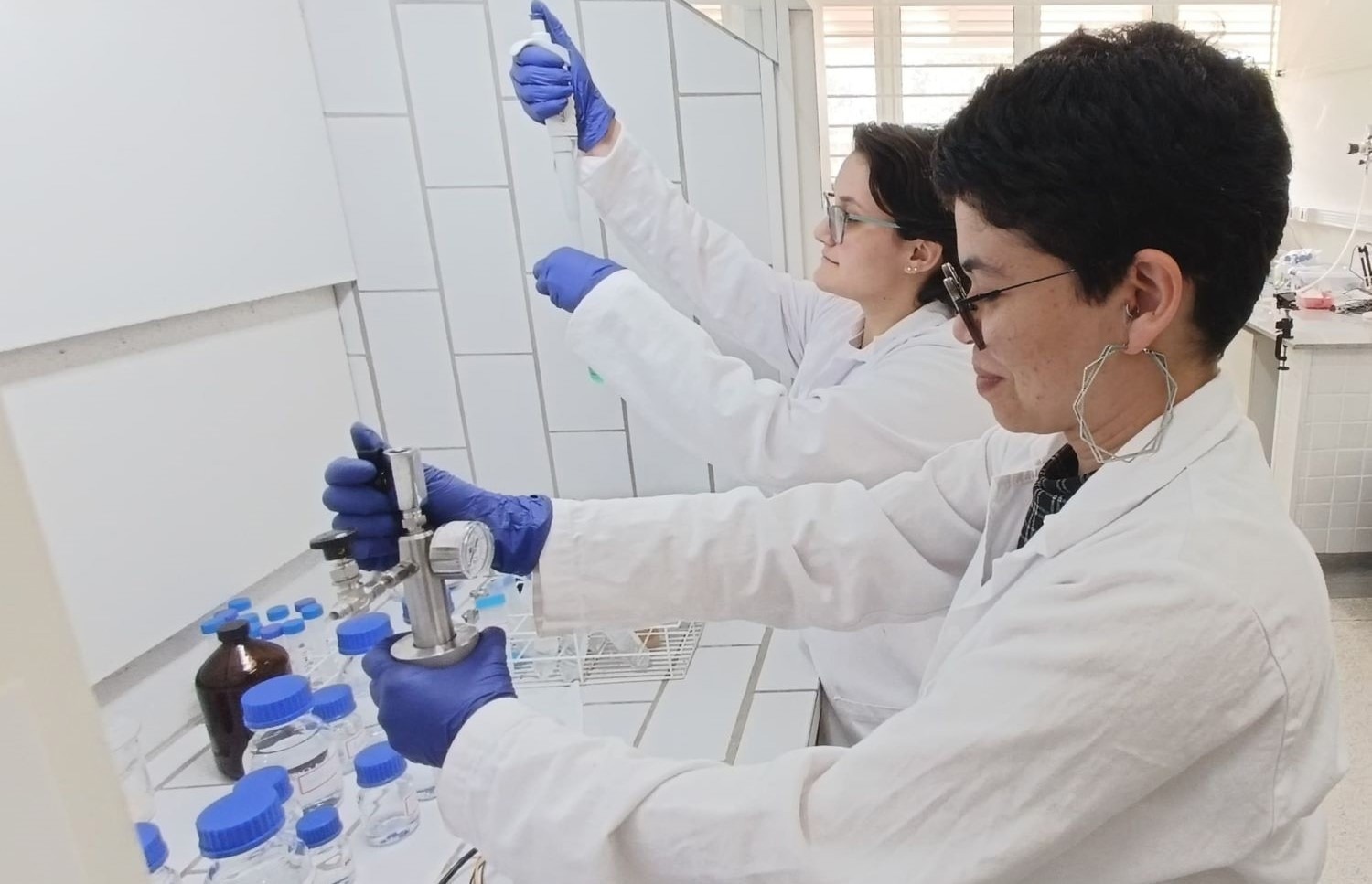Acetone is a critical chemical industry input that is used in the production of a broad range of products, including adhesives, antibiotics, electronic components, solvents and removers, inks, and vitamins. However, its manufacturing is complicated and dangerous. Researchers in Brazil and Germany have discovered a novel technology that employs light and photoactive iron chloride (FeCl3), an inexpensive chemical compound, to simplify and make the process safer and cheaper.
 The alternative strategy is based on oxidation of propane using iron chloride as a homogeneous catalyst in the presence of light. Image Credit: Vitor Gabriel Pastana
The alternative strategy is based on oxidation of propane using iron chloride as a homogeneous catalyst in the presence of light. Image Credit: Vitor Gabriel Pastana
The research, which was supported by FAPESP, was published in the journal ACS Catalysis.
The Hock or cumene process, the conventional acetone production method, consists of numerous phases. Propane, a petroleum product, is transformed into propylene, a highly flammable gas, which then reacts with benzene and oxygen at high temperatures and pressures to produce acetone.
These processes also yield phenol, a compound with little demand that can be transformed into value-added substances at a high cost.
The alternative method developed by scientists from the Federal University of So Carlos (UFSCar) and the Federal University of Minas Gerais (UFMG) in Brazil in collaboration with colleagues from the Max Planck Institute of Colloids and Interfaces in Germany centers on propane oxidation and a photocatalytic reaction in the presence of light using iron chloride as a homogeneous catalyst.
We discovered that when iron chloride is irradiated at certain wavelengths, it produces the radical chlorine, which is a potent oxidant and cleaves the bond between carbon and hydrogen [activates the C-H bond], giving rise to a radical that leads in the presence of oxygen to the formation of acetone. We achieved a very important reaction in an absolutely different manner and using very simple elements.
Ivo Freitas Teixeira, Study Last Author and Professor, Department of Chemistry, Federal University of São Carlos
Mechanistic tests, including mass spectrometry, were used to demonstrate that the reaction was indeed driven by chlorine radicals created by Fe-Cl photolysis. Mass spectrometry is an analytical method that identifies the components of a mixture by calculating the molecular weight of their particles.
The method is direct, avoiding the creation of propylene in intermediary steps, and safer because it does not involve oxygen reactions at high temperatures and pressures, or flammable and dangerous intermediates. Furthermore, because it has fewer phases and happens at room temperature (25 °C), it reduces energy usage and costs.
The researchers hope to employ sunlight instead of light-emitting diodes (LEDs) as a light source in the future, making the technology even more sustainable.
Patent Application and Next Steps
A patent application has been submitted to Brazil’s patent office, the National Industrial Property Institute (INPI), and collaborations with companies are being sought to scale up and market the novel technique.
Teixeira added, “It could become absolutely disruptive for acetone production in the chemical industry, enhancing safety and sustainability, and paving the way to direct production of acetone, which would cut costs and increase competitiveness.”
He noted that the key problems are the vast size of operations in the petrochemical sector and the lack of commercial photocatalysis technologies.
The study is also continuing in two directions: testing the novel technology with additional substances, such as methane, and looking for methods to scale up the process to boost industrial output and yield.
Journal Reference:
Rogolino, A., et al. (2023) Direct Synthesis of Acetone by Aerobic Propane Oxidation Promoted by Photoactive Iron (III) Chloride under Mild Conditions. ACS Catalysis. doi:10.1021/acscatal.3c02092